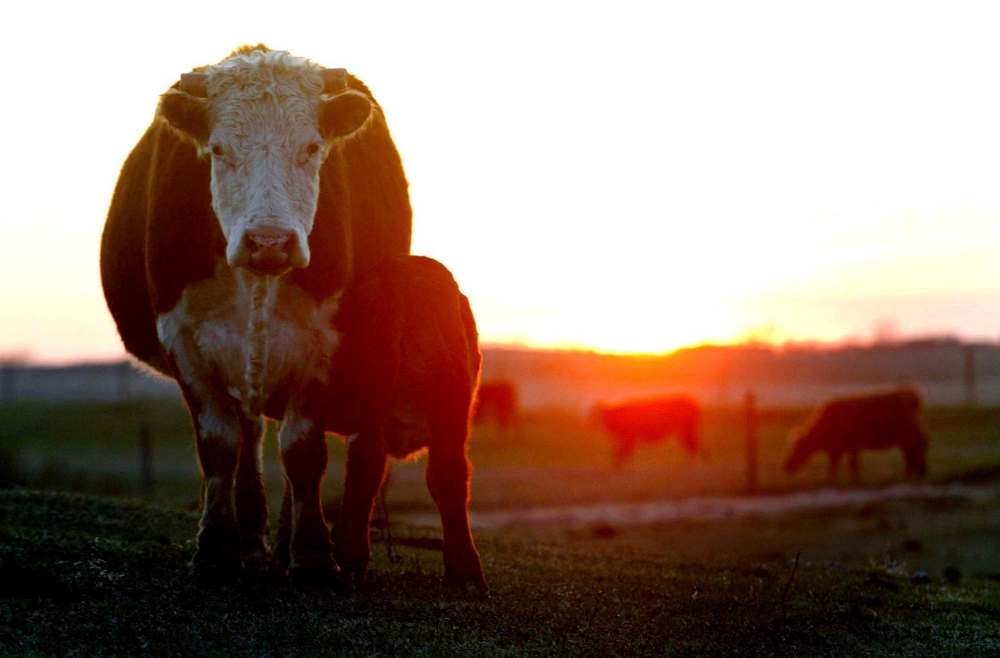Preserving Prairie pastures more important than ever
Advertisement
Read this article for free:
or
Already have an account? Log in here »
To continue reading, please subscribe:
Monthly Digital Subscription
$0 for the first 4 weeks*
- Enjoy unlimited reading on winnipegfreepress.com
- Read the E-Edition, our digital replica newspaper
- Access News Break, our award-winning app
- Play interactive puzzles
*No charge for 4 weeks then price increases to the regular rate of $19.00 plus GST every four weeks. Offer available to new and qualified returning subscribers only. Cancel any time.
Monthly Digital Subscription
$4.75/week*
- Enjoy unlimited reading on winnipegfreepress.com
- Read the E-Edition, our digital replica newspaper
- Access News Break, our award-winning app
- Play interactive puzzles
*Billed as $19 plus GST every four weeks. Cancel any time.
To continue reading, please subscribe:
Add Free Press access to your Brandon Sun subscription for only an additional
$1 for the first 4 weeks*
*Your next subscription payment will increase by $1.00 and you will be charged $16.99 plus GST for four weeks. After four weeks, your payment will increase to $23.99 plus GST every four weeks.
Read unlimited articles for free today:
or
Already have an account? Log in here »
Hey there, time traveller!
This article was published 31/03/2018 (2802 days ago), so information in it may no longer be current.
When the federal government announced in 2012 that it was pulling out of community pasture management, many feared the worst for the network of grasslands that has played such a pivotal role in the Prairie region’s development.
These publicly owned pastures were assembled during a dark era in Prairie history — the Depression and drought-plagued 1930s. Their formation was part of a desperate, yet ultimately successful bid to reclaim vast tracts of badly eroded land and beat back the rolling forces of desertification.
For the most part, these pastures were assembled from abandoned homesteads and forfeitures for unpaid taxes. But there were also incidents in which inhabitants were forcibly evicted if they were in the way — a lasting and bitter legacy for those affected.

The Prairie Farm Rehabilitation Administration’s restoration of permanent undisturbed groundcover on these parcels of land, however, helped diversify and stabilize the farm economy while protecting marginal lands.
Community pastures provide summer grazing, which supplements farmers’ access to pasturelands and make it possible for them to keep more livestock. While these pastures are managed to ensure sustainable grazing rates, they are not artificially augmented by fertilizer or reseeding.
Every summer, 350 Manitoba producers send 41,000 head of stock, representing about four per cent of the province’s beef herd, to these pastures where professional herd managers — usually cowboys on horseback — look after them.
Back in the early days, the pasture programs also helped build the quality of this country’s commercial beef herd by supplying good-quality bulls during the breeding season.
Those benefits are well known and easily measured.
It’s only recently that attention has turned to the “other” services these community pastures provide, such as their role in preserving natural habitat, water retention, supporting endangered species and recreation.
Quantifying the value of those contributions has been more difficult.
A new report released by the Association of Manitoba Community Pastures (AMCP) has added additional context to those efforts. It worked with the International Institute for Sustainable Development (IISD) and the University of Saskatchewan to measure the direct monetary and non-monetary value the 19 remaining Manitoba pastures provide by way of environmental, social and economic benefits.
The Social and Environmental Benefits of AMCP Community Pastures Report puts the overall value of Manitoba’s community pastures at an average of $13.35 million annually. Of course, the biggest value is $5.67 million through the provision of grazing and forage.
However, the value these lands offer by way of carbon sequestration is almost as high at $4.7 million, based on carbon priced at $25 per tonne. The value through recreation, heritage preservation and scientific research was set at $1.2 million, followed by lower values attached to soil conservation, conservation and biodiversity ($825,000), and local economic development ($860,000).
The authors noted their evaluation is incomplete. Protecting species at risk, pollination services and long-term carbon storage were excluded from the analysis because either there wasn’t enough data or there were significant variations across the pasture landscapes.
The point is, we are only beginning to understand the value of our natural capital in this country.
Unless we can attach a monetary value to them, all too often, lands left in their natural state are seen as under-utilized or wastelands.
Community pastures are an example in which such lands have made an important contribution to the region’s economy.
Thankfully, the Manitoba government stepped up when the federal government retreated and oversaw the transition of management to farmer-directed, not-for-profit associations. Saskatchewan has opted to privatize them. In Alberta, the province still maintains “grazing reserves.”
For the most part, these common grazing areas remain intact and are some of the largest contiguous blocks of unbroken prairie remaining. They provide an invaluable historical benchmark against which we can measure the impacts of other landscape-management practices; that’s even more important in the context of a changing climate.
The study’s authors noted, however, that protecting these lands will require more than the support of the farmers who rely on them. One of their key recommendations is to encourage more engagement with the general public and a broader sense of ownership in their future.
Laura Rance is editorial director at Glacier FarmMedia. She can be reached at 204-792-4382 or laura@fbcpublishing.com

Laura Rance is editorial director at Farm Business Communications.
Our newsroom depends on a growing audience of readers to power our journalism. If you are not a paid reader, please consider becoming a subscriber.
Our newsroom depends on its audience of readers to power our journalism. Thank you for your support.
History
Updated on Saturday, March 31, 2018 9:26 AM CDT: Photo added.

